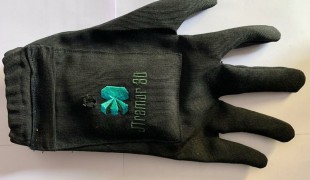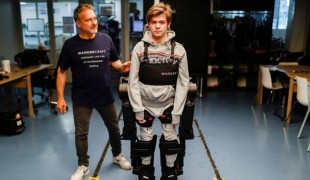- 3504
- 308
- 8
- 10
- 0
- Help Ukraine
About the solution
Júnior Prado, a Brazilian with a master’s degree in Electrical and Computer Engineering, faced several serious challenges growing up, due to his medical condition. He was born with cerebral palsy. Regarding school, the main problem he had was not being able to write. So, Júnior had to rely on his colleagues for class notes and the evaluations were made orally.
Inspired by the hardships he went through, Junior devoted his expertise to developing tools that could ease the life of people alike. Alongside the team of ‘Grupo de Tecnologias Assistivas e Educacionais (TAE)’ of the Federal University of Ceará, he designed the AdaptMouse, which allows patients with motor disabilities to use the computer. The mouse benefits people with low mobility in the upper members and was made using a 3D printer. The main advantage compared to the equipment already on the market is the price, which is much lower.
It was also created, to be used alongside the mouse, an adapted text editor, which detects hand gestures and converts them into written text. The system that detects hand motion replaces the traditional keyboard. For the development of these tools, it was used machine learning techniques and electromyograms (EMG). Further information about the methodology used can be found in the article: ‘Classification of Hand Movements from EMG Signals for People with Motor Disabilities’. (DOI: 10.1109/TLA.2020.9398644)
Júnior Prado is perfecting the products and has hopes to put them on the market in a near future.
This story was adapted from: https://agenciabrasil.ebc.com.br/geral/noticia/2021-11/engenheiro-com-pa... and https://www.opovo.com.br/noticias/ceara/sobral/2021/11/11/engenheiro-cri...
The images were taken from: https://diariodonordeste.verdesmares.com.br/regiao/no-interior-do-ce-alu... , as we do not own any of them.
这些解决方案不应包括使用药物,化学品或生物制品(包括食品);创伤性设备;冒犯性的,商业或内在危险的内容。该解决方案未经医学验证。请谨慎进行!如果您有任何疑问,请咨询健康专家。
DISCLAIMER: This story was written by someone who is not the author of the solution, therefore please be advised that, although it was written with the utmost respect for the innovation and the innovator, there can be some incorrect statements. If you find any errors please contact the patient Innovation team via info@patient-innovation.com
-
-
348
-
0
-
4256

How a nice's invention for his uncle is changing Parkinson's management
Grip
(SELF)-CARE: EATING: Eating independently.
(SELF)-CARE: DRINKING: Drinking independently.
Parkinson's Disease
Body-Worn solutions (Clothing, accessories, shoes, sensors...)
Tremors
Muscle cramps or spasms
Stiffness or rigidity (difficulty moving)
Regaining sensory function
Promoting self-management
Managing Neurological Disorders
To improve Treatment/Therapy
Raise awareness
Caregiving Support
General and Family Medicine
Internal Medicine
Neurology
Orthopedics
Physical Medicine and Rehabilitation
Germany
-
-
-
316
-
0
-
2950

The straw that broke the hearing loss of an army veteran
COMMUNICATION: Communicating, whether by speaking, listening, or other means
Hearing Disorders
5 Senses support devices: (glasses, hearing aids, headphones...)
3d Printed
Promoting self-management
Preserving Organ Function
Promoting inclusivity and social integration
Recovering from Traumatic Injuries
Improving Speech and Communication
Preventing (Vaccination, Protection, Falls, Research/Mapping)
Raise awareness
Caregiving Support
General and Family Medicine
Internal Medicine
Otorhinolaryngology
United States
-
-
-
401
-
0
-
5582

Father creates exoskeleton to help son with genetic neurological condition walk
BODY BALANCE: Maintaining body balance
STANDING UP: Standing up from a seated position
WALKING WITH A WALKING AID: Walking with a walking aid
CAREGIVING
Cervical spinal cord injury/Tetraplegia
Assistive Technology access
Walking Aid (wheelchair/walker/crutches)
Restoring mobility
Managing pain
Promoting self-management
Preserving Organ Function
Managing Neurological Disorders
Recovering from Traumatic Injuries
Maintaining Balance and Mobility
Restoring Blood Circulation
To improve Treatment/Therapy
Preventing (Vaccination, Protection, Falls, Research/Mapping)
Raise awareness
Caregiving Support
General and Family Medicine
Intensive Care Medicine
Neurology
Physical Medicine and Rehabilitation
Sports Medicine
France
-
 zh
zh